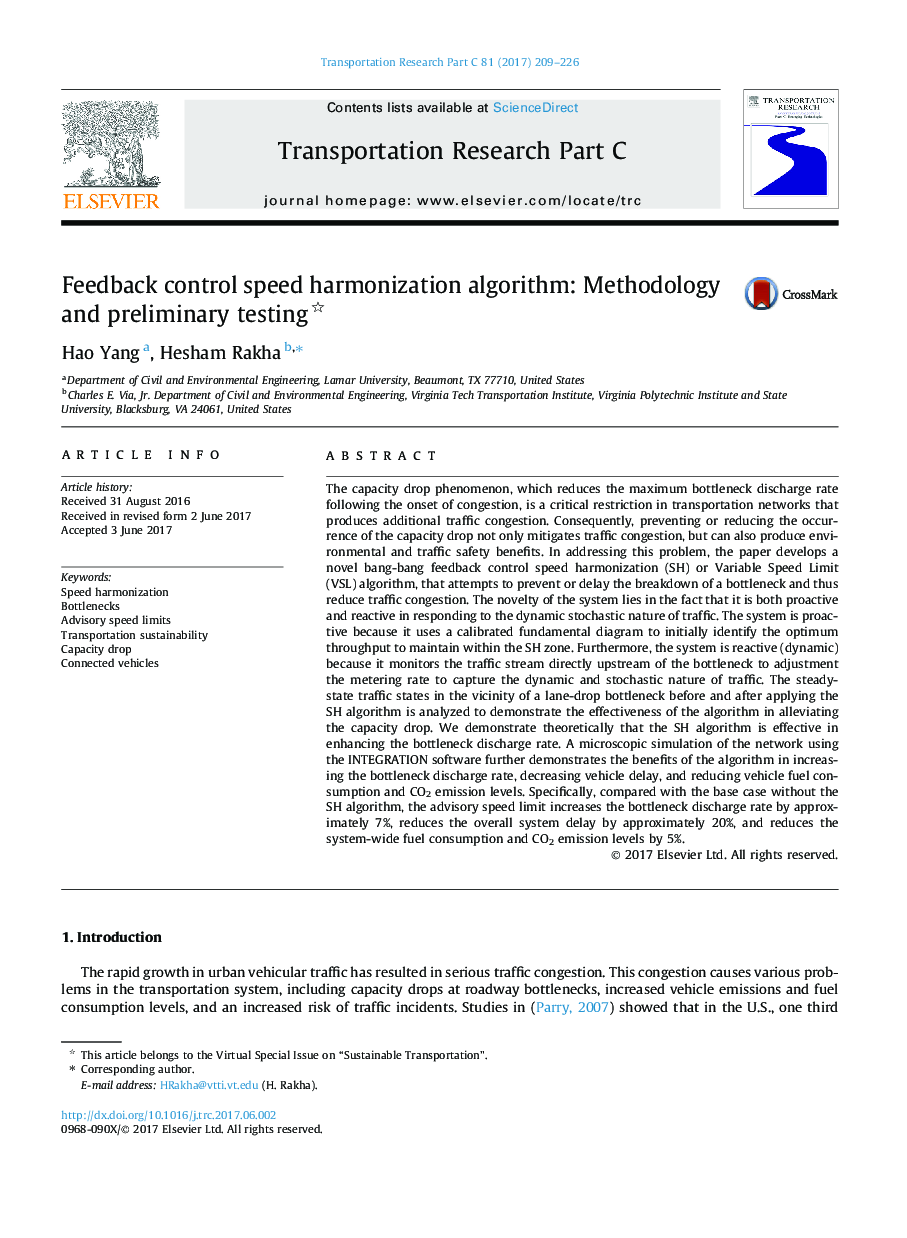| کد مقاله | کد نشریه | سال انتشار | مقاله انگلیسی | نسخه تمام متن |
|---|---|---|---|---|
| 4968418 | 1449667 | 2017 | 18 صفحه PDF | دانلود رایگان |
عنوان انگلیسی مقاله ISI
Feedback control speed harmonization algorithm: Methodology and preliminary testing
ترجمه فارسی عنوان
الگوریتم هماهنگ سازی سرعت کنترل بازخورد: روش شناسی و تست اولیه
دانلود مقاله + سفارش ترجمه
دانلود مقاله ISI انگلیسی
رایگان برای ایرانیان
کلمات کلیدی
هماهنگی سرعت، تنگنا محدودیت سرعت مشاوره، پایداری حمل و نقل، افت ظرفیت، وسایل نقلیه متصل،
موضوعات مرتبط
مهندسی و علوم پایه
مهندسی کامپیوتر
نرم افزارهای علوم کامپیوتر
چکیده انگلیسی
The capacity drop phenomenon, which reduces the maximum bottleneck discharge rate following the onset of congestion, is a critical restriction in transportation networks that produces additional traffic congestion. Consequently, preventing or reducing the occurrence of the capacity drop not only mitigates traffic congestion, but can also produce environmental and traffic safety benefits. In addressing this problem, the paper develops a novel bang-bang feedback control speed harmonization (SH) or Variable Speed Limit (VSL) algorithm, that attempts to prevent or delay the breakdown of a bottleneck and thus reduce traffic congestion. The novelty of the system lies in the fact that it is both proactive and reactive in responding to the dynamic stochastic nature of traffic. The system is proactive because it uses a calibrated fundamental diagram to initially identify the optimum throughput to maintain within the SH zone. Furthermore, the system is reactive (dynamic) because it monitors the traffic stream directly upstream of the bottleneck to adjustment the metering rate to capture the dynamic and stochastic nature of traffic. The steady-state traffic states in the vicinity of a lane-drop bottleneck before and after applying the SH algorithm is analyzed to demonstrate the effectiveness of the algorithm in alleviating the capacity drop. We demonstrate theoretically that the SH algorithm is effective in enhancing the bottleneck discharge rate. A microscopic simulation of the network using the INTEGRATION software further demonstrates the benefits of the algorithm in increasing the bottleneck discharge rate, decreasing vehicle delay, and reducing vehicle fuel consumption and CO2 emission levels. Specifically, compared with the base case without the SH algorithm, the advisory speed limit increases the bottleneck discharge rate by approximately 7%, reduces the overall system delay by approximately 20%, and reduces the system-wide fuel consumption and CO2 emission levels by 5%.
ناشر
Database: Elsevier - ScienceDirect (ساینس دایرکت)
Journal: Transportation Research Part C: Emerging Technologies - Volume 81, August 2017, Pages 209-226
Journal: Transportation Research Part C: Emerging Technologies - Volume 81, August 2017, Pages 209-226
نویسندگان
Hao Yang, Hesham Rakha,
